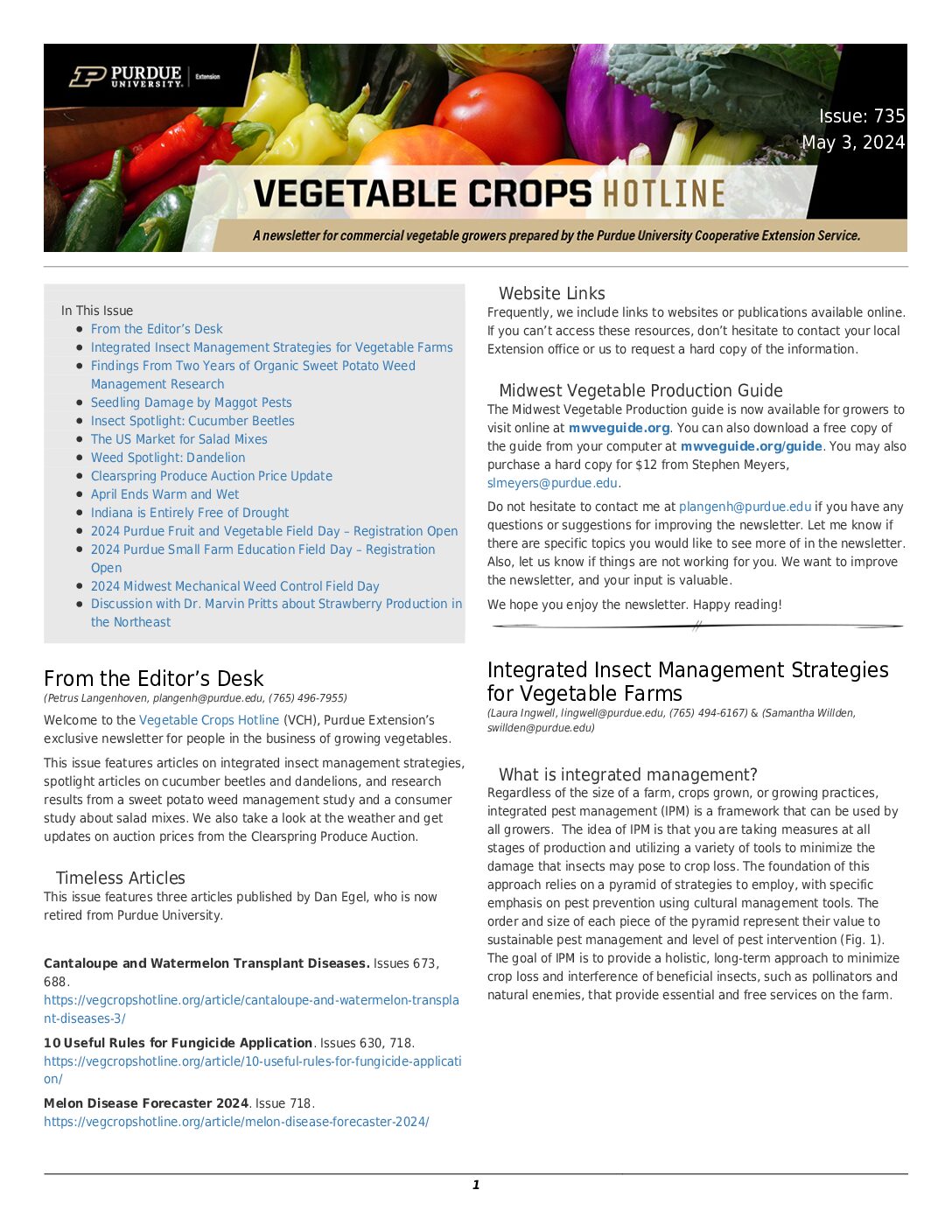Last year at the Southwest Purdue Agricultural Center (SWPAC) we conducted a tomato high tunnel trial described here. In this article, I would like to talk about the trial we will conduct in 2015, a repeat of the 2014 trial. In particular, I would like to talk about what we have done for fertility.
Before deciding on a fertility scheme, it is critical to conduct a soil test each year. Our soil test from November 2014 showed that our high tunnels were low in sulfur, boron and moderately low in zinc. In fact, plant tissue tests conducted during the 2014 season were low for both sulfur and boron. As a result of these tissue tests, we added a 10% liquid boron product and ammonium thiosulfate (7%) to the fertigation during the 2014 season. However, the next set of tissue tests carried out during the 2014 season also came back low in these two elements. It wasn’t until the end of the 2014 season that we observed levels of boron and sulfur close to normal. It may be that when tomato plants are growing very quickly, it is difficult to add sufficient nutrients to keep up with demand. (I should add that our yields of tomatoes were over 140,000 lbs on a per acre basis for the 2014 season. The low boron and sulfur tissue tests didn’t seem to hurt our yields too much. However, if we hadn’t monitored by tissue tests and added boron and sulfur, the yield may have been affected.) Since we had trouble keeping up with boron and sulfur levels in 2014, this year we decided to add 2.5 lbs per acre of zinc sulfur (10/7%) and 1.5 lbs. per acre boron (14.3%) pre-plant broadcast (see update below). We also added 200 lb per acre pelletized lime.
During the season we will add nutrients at every irrigation (fertigation). We transplanted on April 2, 2015, adding a cup of 20-20-20 liquid starter fertilizer per plant. We started fertigating potassium nitrate (KNO3) on April 6. We mix 2 oz. of KNO3 per gallon which is then applied at a ratio of 1:100 at each fertigation. Each high tunnel has 5 rows 80 feet long that has drip tape and black plastic mulch. We started out fertigating 20 gallons twice a day per high tunnel. Five days later, we started fertigating 20 gallons 3 times a day. On April 21, we started giving the tomatoes 30 gal 3 times per day.
We try to avoid fertigating with pre-mixed products such as a 20-20-20 through the drip. Such products almost invariably add elements that are not needed. In our case, for example, phosphate is not needed and would be added in most general mixes. Adding elements that are not needed may lead to a buildup of salts in the soil. This is a particular problem where tomatoes are grown year after year in a greenhouse or high tunnel.
Please return to this blog to hear about other developments in our high tunnel projects or other vegetable issues that I encounter during the season. And feel free to contact me with questions or comments.
Update June 5-We just recived our first foliar nutrient tests back. In many of the samples, the boron was listed as ‘excessive’. We don’t see any advserve reaction of the tomato plants yet, but it looks as if we over did the boron.
